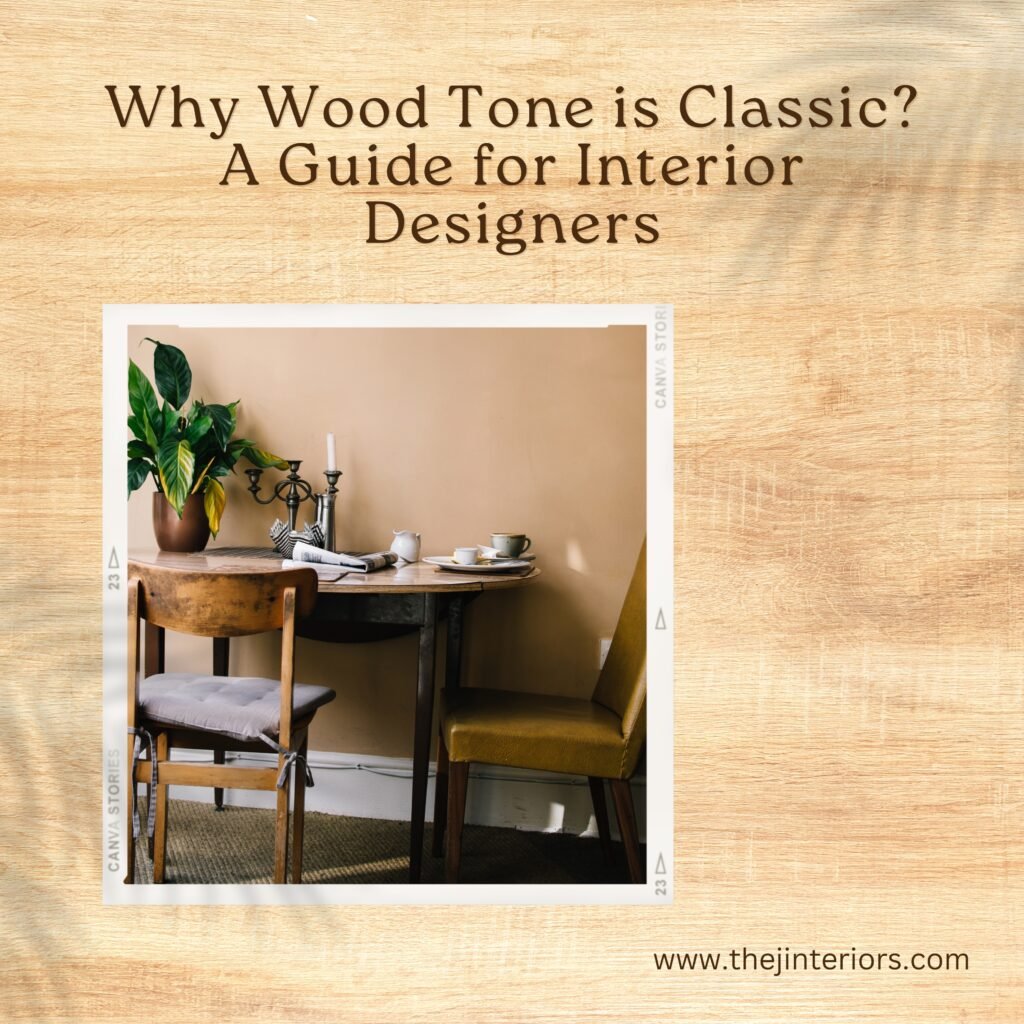Introduction:
Wood has been a staple in interior design for centuries, and it continues to be a timeless element that can enhance any space. The choice of wood tone plays a crucial role in determining the style, warmth, and longevity of your interior design. As an interior designer, it’s essential to understand which wood tones stand the test of time, ensuring that your clients’ spaces remain elegant and inviting for years to come.
In this comprehensive guide, we will delve into the world of wood tones and explore the ones that are considered timeless. We’ll discuss the characteristics, applications, and tips for incorporating these timeless wood tones into your interior design projects.
The Timeless Allure of Wood Tones
Wooden elements in interior design have an enduring appeal for several reasons:
Warmth: Wood infuses a sense of coziness and warmth into any space, making it more inviting.
Versatility: Wood tones can complement a wide range of interior styles, from traditional to modern.
Durability: High-quality wood furnishings and finishes can last for generations, making them an excellent investment.
Sustainability: Many wood sources are renewable and eco-friendly, aligning with the growing trend of sustainable design.
Classic Wood Tones: Timeless Choices for Interior Designers
Let’s explore some classic wood tones that have stood the test of time:
1. Walnut
Walnut wood is renowned for its deep, rich, and dark brown color. It exudes a sense of sophistication and luxury, making it a timeless choice for furniture and cabinetry. Interior designers often use walnut for creating a timeless, elegant look in various design styles, from traditional to contemporary.
Applications: Walnut works exceptionally well for creating stunning dining tables, chairs, and cabinets, lending a sense of timeless beauty to dining rooms and kitchens.
2. Oak
Oak is celebrated for its versatility and durability. It comes in various shades, from light to medium and even dark brown. Oak’s prominent grain pattern adds character to any space. The natural, warm appearance of oak makes it an excellent choice for flooring, furniture, and paneling.
Applications: Oak floors are a classic choice for living rooms and bedrooms, offering both beauty and durability. Oak furniture and cabinetry are also timeless additions to kitchens and dining rooms.
3. Cherry
Cherry wood has a warm, reddish-brown hue that darkens over time, creating a rich, inviting ambiance. It’s often chosen for its timeless elegance, making it a popular choice for fine furniture and cabinetry. Cherry wood’s ability to age gracefully further enhances its appeal.
Applications: Cherrywood is ideal for crafting luxurious bedroom furniture, including beds and dressers, as well as elegant dining room sets.
4. Maple
Maple wood is known for its pale, creamy appearance, with a smooth and even grain pattern. It provides a clean, contemporary look, making it a versatile choice for a wide range of interior design styles. Its ability to take on different finishes adds to its adaptability.
Applications: Maple is often used for kitchen cabinets, tabletops, and flooring, lending a timeless touch to modern and transitional kitchens.
5. Mahogany
Mahogany is synonymous with luxury and opulence. Its deep, reddish-brown color and fine grain pattern make it a top choice for crafting high-end furniture and woodwork. Mahogany is often associated with classic and vintage interior designs.
Applications: Mahogany’s regal appearance is perfect for crafting antique-inspired furniture, grand libraries, and home offices.
6. Pine
Pine is a softer wood with a light, pale color that carries a rustic charm. While it may require more care to maintain its beauty, it remains a timeless choice for those seeking a cottage or farmhouse aesthetic.
Applications: Pine is often used for creating rustic, farmhouse-style dining tables, chairs, and cabinetry, infusing a sense of warmth and nostalgia.
Tips for Interior Designers:
Mix and Match: Don’t limit yourself to a single wood tone. Combining different wood tones can create a visually appealing contrast in your design.
Consider the Finish: The finish applied to wood can significantly impact its appearance. Experiment with matte, glossy, or distressed finishes to achieve the desired effect.
Lighting Matters: The way light interacts with wood tones can drastically change their appearance. Consider natural and artificial lighting when designing with wood.
Harmonize with Color: The paint colors and decor elements in a room should complement the wood tone to create a harmonious design.
Timeless Accessories: Incorporate timeless accessories, such as rugs, curtains, and artwork, to enhance the overall aesthetic and balance the wood tones.
Conclusion:
As an interior designer, understanding the timeless appeal of different wood tones is essential for creating enduring, elegant spaces. Whether you opt for the classic richness of walnut, the versatility of oak, or the opulence of mahogany, your choice of wood tone can transform a room, making it both inviting and stylish. By harnessing the enduring charm of these wood tones and combining them with your design expertise, you can create spaces that will stand the test of time, pleasing your clients and enhancing their living environments.
